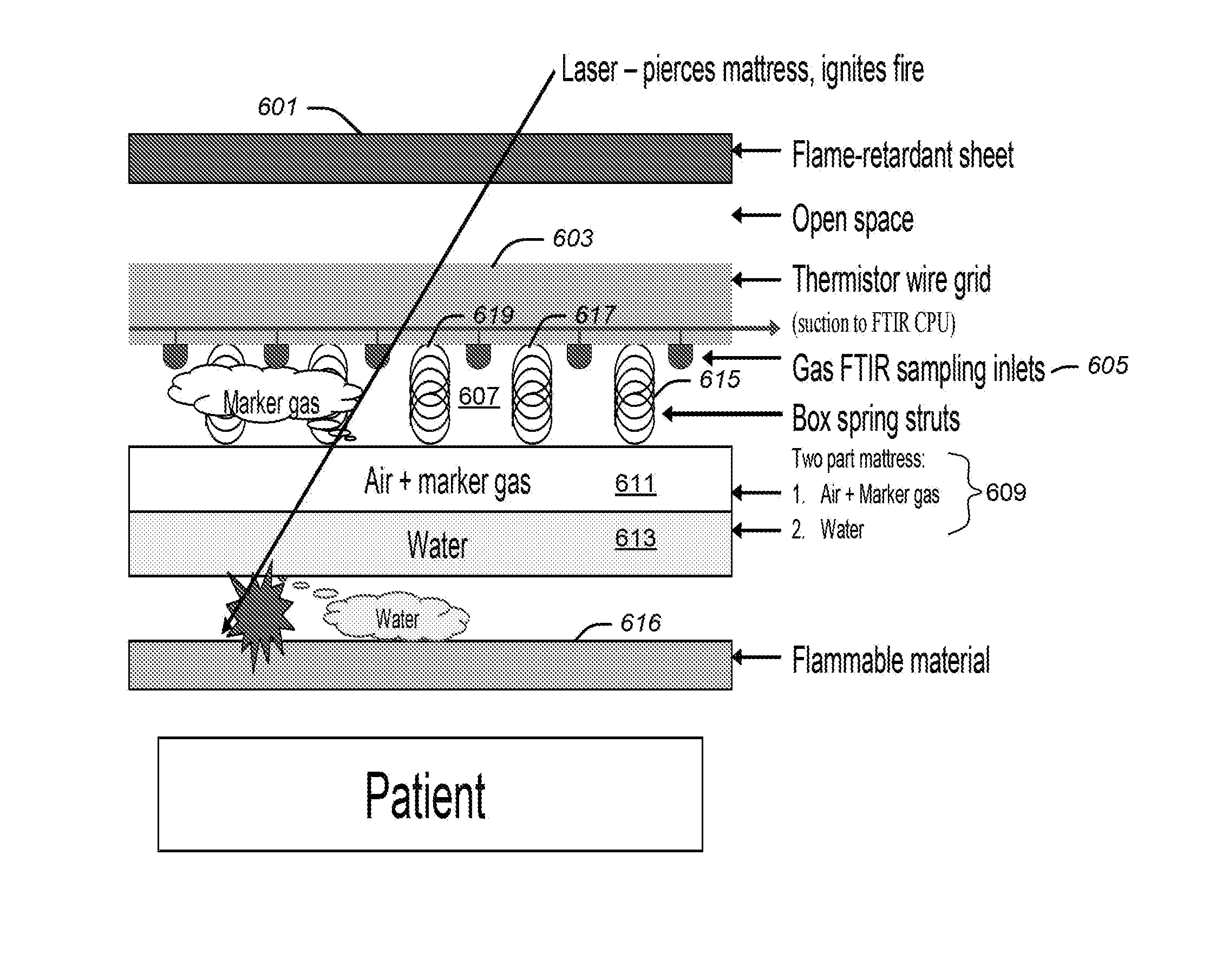Detection and suppression of airway / drape fires during surgical procedures
a technology for airway and drape fires, applied in respirators, instruments, applications, etc., can solve the problems of patient suffering second-degree burns to the face, neck, upper chest, severe burns, etc., and achieving the effect of reducing the risk of fires, and reducing the risk of surgical complications
- Summary
- Abstract
- Description
- Claims
- Application Information
AI Technical Summary
Benefits of technology
Problems solved by technology
Method used
Image
Examples
Embodiment Construction
[0057]Illustrative embodiments are now discussed. Other embodiments may be used in addition or instead. Details which may be apparent or unnecessary may be omitted to save space or for a more effective presentation. Conversely, some embodiments may be practiced without all of the details which are disclosed.
[0058]An intelligent, multi-sensor, fire detection and suppression system may preemptively detect an incipient operating room fire in milliseconds. If sensor thresholds are exceeded (indicating an impending fire), the system may initiate fire suppression with a speed that exceeds human reaction times. The system may be based on Fourier Transform Infrared Spectroscopy (FTIR) that detects flames, toxic materials, combustion byproducts, ignitable gases, and smoke particles.
[0059]A linear thermistor (temperature-dependent resistor) within an ETT / breathing tube may be used to detect and localize the site of temperature rise. If a threshold is exceeded, a saline jet may be applied to r...
PUM
 Login to View More
Login to View More Abstract
Description
Claims
Application Information
 Login to View More
Login to View More - R&D
- Intellectual Property
- Life Sciences
- Materials
- Tech Scout
- Unparalleled Data Quality
- Higher Quality Content
- 60% Fewer Hallucinations
Browse by: Latest US Patents, China's latest patents, Technical Efficacy Thesaurus, Application Domain, Technology Topic, Popular Technical Reports.
© 2025 PatSnap. All rights reserved.Legal|Privacy policy|Modern Slavery Act Transparency Statement|Sitemap|About US| Contact US: help@patsnap.com



